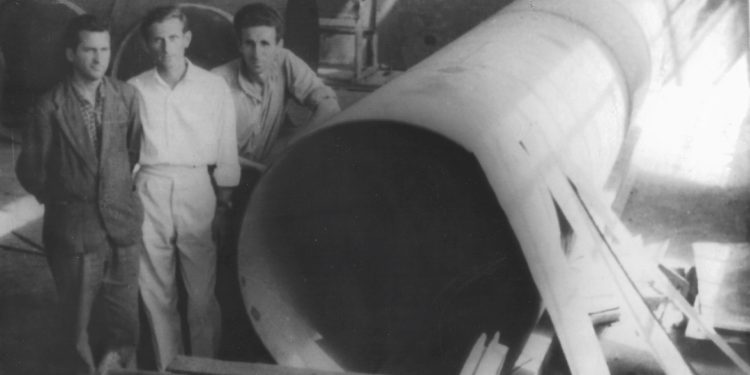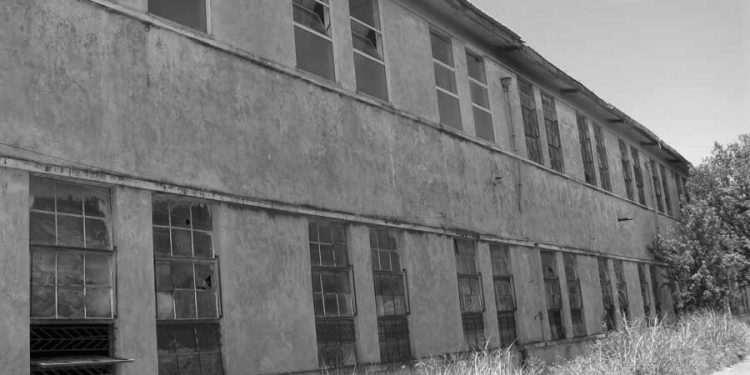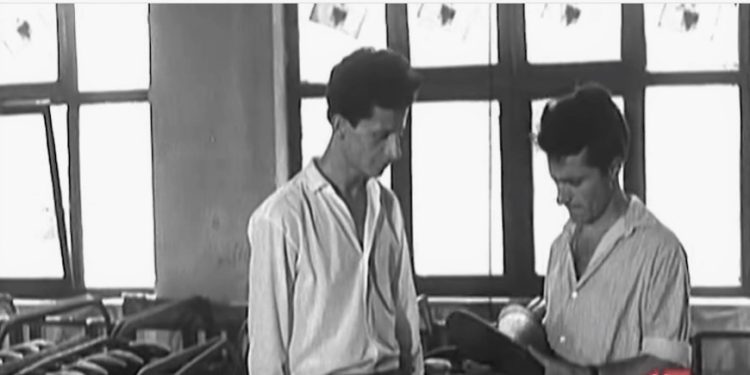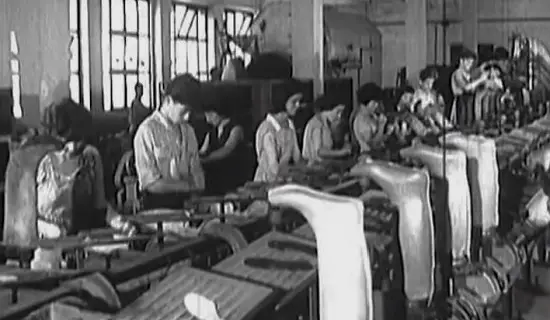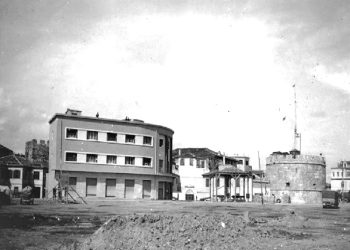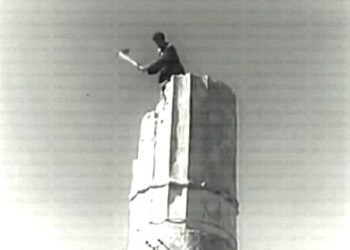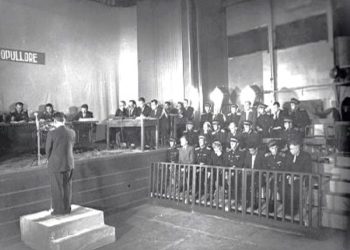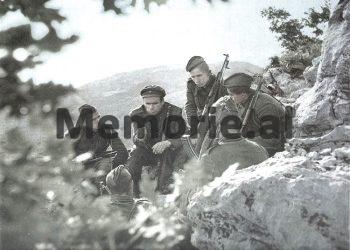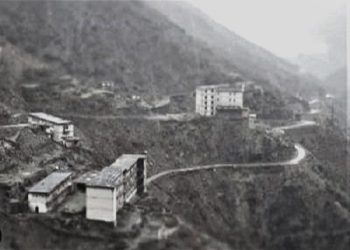-Hysni Kapo rejected the project that would have brought millions of dollars in profits to the country, while Luan Struma, who did the rationalization, was “rewarded” with a camp card, on the beach of his city and with a commendation card-
Memorie.al / A 3-million-dollar plant would have transformed our country into the largest exporter of bichromate in Europe. The old technology and the lack of vision of the rulers of the communist regime did not make it possible for the Chemical Plant in Porto – Romano to keep up with the times. The possibilities of turning the country into the main exporter of bichromate on our continent were not taken into account by turning Kimike into the polluting giant of Durrës. Many of its workers carried for life the consequences of diseases caused by chemicals and primitive technological processes.
The lack of vision and the country’s policy of self-isolation during the period of the communist regime in Albania was directly felt in the industry. Between the two World Wars, Durrës inherited workshops, departments, plants and factories with Western technology. They were mainly Italian and gave the coastal city the first premises for the construction of industrial areas. Parallel to the introduction of machines for the production of bricks and lines for Nish-Goma and Plastics, lines for the production of chemicals were also opened in Durrës, all with Italian technology and equipment.
Political developments after 1944 caused the Italian investors to leave and the lines, property, machinery and capital as a whole to be nationalized. Such a policy put the industry in a complicated situation, while it collapsed in the 85-90s of the last century. The old technology, left in Albania, could not cope with the demands and needs of the chemical industry, while the state’s refusal to build a plant for the production of 10 thousand tons of bichromate salt per year degraded the chemical industry in Porto -Romano.
Specialists have said that the modern Italian plant, which could cost no more than 2.5 million dollars at that time, paid for itself, the investment, within 1 year and a half, while our country became an important and very profitable exporter in the market European and world. If the Italian plant were to be installed, the Chemical Plant in Durrës, it would provide 15 million dollars of income per year, just from the trading of bichromate, which was sold at 1,500 dollars per ton. Other profits would come from the chemicals, which were dumped as waste at the Porto-Romano factory, since there was no processing plant.
While such an idea was not accepted at that time, the Albanian state has spent millions of dollars without any kind of yield, in efforts to produce lindane. The plant and centrifuge of the advanced Japanese line, which cost about 2 million dollars, went in vain like other millions of dollars, due to the lack of will of the Albanian side to cooperate with foreign specialists.
Today in Shkozet and in Porto Romano, there are still the ruins of chemical production facilities, while from the building to neighborhood no. 1, near the Promenade “Taulantia”, there is no trace left. After 1995, our country imports all kinds of chemicals, since the Chemical Plant in Porto-Romano was completely destroyed, not being able to keep the production line of fire extinguishers effective.
Chemical lines
NISH (State Industrial Enterprise) of Kimike, was opened in the 30s of the last century, in Shkozet, Durrës, by Italian investors. At first, the simple plant produced oxygen for the needs of that very small industry as well as for hospital services. The Italians, taking advantage of the proximity to Durrës, at that time, showed interest in the development of industry in this city, which was located some 80 miles away from the Italian coast. They, in cooperation with local merchants, built the first oxygen plant in Shkozet, to continue the line in a building in neighborhood no. 1 of the city and a third in Porto Romano.
After the 1950s, the core of this workshop in Shkozet, with a technology of the time, was Xhevdet Laze. For several years, the workshop operated as part of the Water Company, from which it was separated in 1952. It was at this time that Laze designed another oxygen factory in Shkozet. The Italian plant and the one built by Laze were combined in the same building, keeping only the oxygen line. Laze was a well-known specialist at that time, not only in Durrës. At the age of 24, he was elected a deputy in the People’s Assembly of Albania, while he became part of the Albanian delegation headed by the dictator Enver Hoxha, in his visit to Moscow for the meeting with Stalin.
In a small building in “Vollga”, near the place where the swimming pools are today, the aluminum sulfate production department was set up, a chemical that served as a raw material for the paper factory in Kavajë, Lushnje and Lezhë. But aluminum sulfate was also very necessary for drinking water reservoirs and wells that served to supply water to the inhabitants of the villages. Sulfate precipitated the waste at the bottom of the tank, keeping the mechanical purity of the water under control. The raw material was kaolin, which was taken in Korpulth of Puka and mixed with acid and water.
The chemical factories in Durrës also produced other substances and salts, as well as essences of various dyes for coloring. There was even a separate department for the aniline dye for coloring, another department for bichromate, sulfur, aluminum sulfate, lindane and other pesticides. Even in its beginnings, at the Chemical Company, a medicine X, for washing clothes, was also packaged, a substance that came from the import and was packaged in smaller quantities in Durrës. The Shkozeti plant was named at that time by Prime Minister Mehmet Shehu; “founder of the Albanian chemical industry”. Its expansion came step by step. Oxygen was much needed by industry and health.
Around the 1960s, one such, but not for oxygen production, was opened in Porto Romano. There were several buildings built by the Italians. In addition to the facilities for the factory, two-story residential buildings 3+1 were also built for the employees. During the time of Italian investments in Durrës, a tannery was opened in Porto-Romano. Investors have taken care to build workers family housing, kitchen, shops and infrastructure suitable for the time. Bicarbonate was the first ingredient to regenerate the skin, so the corresponding plant was also prepared.
Our country was very rich in subsoil, and chromium, the raw material for producing bichromate, was found everywhere. But bichromate, due to lack of technology, was imported at $1,500 per ton. Chemical specialists in Porto-Romano started thinking about producing this important and very valuable chemical on the world market. The mixture of chrome, soda from Vlora, sulfuric acid from Laçi and limestone from Gomsiqe e Puka, under industrial conditions, made the production of bichromate easily possible. But the technology in Porto-Romano was very primitive, since the oven for baking chrome resembled that for baking pans.
Chromium to be baked needed no less than 1100 degrees, otherwise oxidation would not occur, the process that turns it from 3 to 6 valent. But the baking temperature was measured by eye and this made it very difficult to produce a quality chemical. Eye measurement was done by highly experienced specialists. They should be guarded and show in the maximum way, intuition and evidence of rare professional skills, since passing this temperature would cause the opposite process to happen. The massif, chrome lava took on a special color and was observed with great attention and responsibility. But this type of observation was not qualitative.
As time passed and the need for bichromate increased, a device was found to measure the temperature of the baking process. The factory provided a pyrometer, which accurately measured the temperature by means of a funnel. During the technological process, the acidification of the solution was needed and the PH was required to reach 3.8. This was another measurement difficulty, since the tracing paper has whole scales and did not capture the fractions. So, the beggar measures 2, 3, 4… and not 2.10, 2.20, 2.30. The purity of the production was around 40%, a low figure and totally unsuitable for the foreign market.
The persistence of specialists made it possible to find a solution that measured PH, capturing every fraction and this increased the quality, bringing it to the world level. Palush Bozo, was the specialist who gave impetus to this process, making the bichromate salt, sought after in the foreign market. But production continued to be so low that it did not meet the country’s requirements. Until this discovery, the chemical was used for geology, whose probes rusted and damaged, in basic soils. This chemical was also used in the leather industry, but in both cases, with very little benefit.
On the other hand, due to the outdated technology of the time, the factory produced many by-products as worthless. The chemist in Porto-Romano also produced chemicals for paint, but the paints with different bases were not of high quality. Paints are resistant to light and water. Coming into contact with water and light, it bleached, discolored the material, rinsed it. Even paints, the raw material to be produced, have chrome, since in it the paint kept its color and got a very good shine. The factory threw away this material as waste, just because it did not have the technological process.
But this waste abroad cost $3,000 per ton. This prompted engineers and specialists at the plant to think about processing this waste, as well as increasing the amount of bichromate production. Until the 1960s, up to 40 tons of such chemicals were produced in Porto-Romano Chemicals per year, while the Albanian industry and economy needed more than 250 tons per year. Thanks to the innovation of specialists, it became possible to build a new type of oven for baking.
The technological process consisted of assembling two long pipes, which were rotated by a gear, while the pipes also had a suspension. On one side, the material was inserted, while on the other side, the flame was inserted to bake it. These specialists required that the wings, pipes be 25 m. long, while skeptical leaders. approved the project by shortening the wings to 12 meters. Although the specialists were not satisfied with this kind of “release”, they built the joint and by means of this particular finding. 3-folded the production of bichromate, bringing it to 120 tons per year.
The lindane plant
The Albanian government has spent a river of dollars. to build the lindane production plant. At first, this chemical began to be produced in Shkozet, at the department that was built by the Italians. The plant had stainless steel pipes and enameled drums. The grinding mill was manufactured in West Germany, the filter press in Italy and the centrifuge in Japan. But the line was not of high quality, as the production circuit was not closed, according to the required technology. The production was low and with many problems in the line.
This led to the insistence on a new department for lindane and Porto-Romano was chosen, where a few years later the factory and plant with a wide range of departments and lines would be built. In Shkozet, the production line did not work at all, although thousands of dollars were spent and to make a second test, it was decided to transfer the line to the north of Durrës. Many trials were conducted, but all were almost unsuccessful. Lindane, had very subtle technology.
Only four countries in the whole world produced linden, so our country would find it very difficult, even impossible, to stay on this list. The world built these plants in peripheral, deep, uninhabited areas, as they released pollution, poisons, gases and had a negative impact on the earth, plants, animals and people. The plant was taken over by the Czechs, who removed it, as the technology caused pollution. The Czech specialist, one of the best engineers in the field, who closely visited this line, asked the Albanian side to close the section as soon as possible. According to him, the technology for lindane was complicated and impossible to realize in Durrës, with the conditions that existed at that time.
The Japanese centrifuge of the plant was made of stainless steel and cost very expensive, 2 thousand dollars. Lindane being aggressive known and produced with a technology not of the required standards, damaged this device. Once every six months, the Chemist had to buy the centrifuge, spending 4 thousand dollars a year, just for this equipment. The Czech Republic had removed it because it had started the ecological revolution, while the line was placed on the outskirts of Durrës, in an open and completely unprotected area. So, on days with wind from the north, the city was polluted by the stench and dust of this poison, which was carcinogenic.
The high costs of maintaining this line prompted some specialists to consider extending the life of the centrifuge. Luan Struma dressed the centrifuge from the inside, making this equipment last from six months to three years, saving the company huge sums. Struma was “rewarded” with a camp sheet, on the beach of his city and with a commendation sheet. But the lindane factory did not have any kind of success. Millions of dollars spent, could not introduce the production in the modern technological process, while the lindane was released into the nature, endangering the lives of the inhabitants of the area, as well as polluting the air, soil and underground water.
Fire extinguishers
Fire extinguishers are also produced in the Chemical Industry of Porto-Romano. This kind of process became possible many years after the factory was built. It was the intervention of Hekuran Isai, Minister of the Interior at that time, that gave impetus to the opinion of the specialists. Until that time, fire extinguishers were imported and this burdened the budget of the Ministry of the Interior. That’s why it was considered reasonable to discuss their construction, in Durrës Chemistry. Chemical specialist Shkëlqim Kokomani took it upon himself to prepare the fire department. First, he consulted a catalog coming from abroad and then provided all the right materials. The extinguishing consisted in the preparation of foam, which should serve to isolate the flame. This was also the most delicate part of the production technology.
Kokomani was interested in the Food Enterprise, to learn where the substance that served as a foam in the pastries was found, which kept it for a month without dissolving. He learned that foam was produced from a plant called led to, which grew in large quantities in Erseka, without needing to be cultivated. The plant was about the diameter of a pencil, with shallow roots, and was not poisonous. After it was collected and cleaned, it was put into baking ovens and the softened mass became foam.
Specialists in Porto-Romano Chemicals thus produced seven types of extinguishers. Combines, workshops, administrations, offices, schools, hospitals, combine harvesters, vehicles, buses and every home needed this tool. So, the market was wide and very profitable. In Porto-Romano, fire extinguishers were produced that did not conduct electricity, dry, powder and solution fire extinguishers. So, in addition to bichromate, aluminum sulfate, lindane, sulfur, paints, various pesticides, fire extinguishers were also produced in Porto-Romano.
Incidents
In 1967, a serious incident occurred in the fireworks manufacturing department. The department manager in this small workshop was Hajdar Ferra. Most of the employees were women, who did not have any special training or qualification, even though the trade was very delicate, as they worked with gunpowder. The incident occurred as a result of the explosion of dry gunpowder, due to carelessness shown during the technological process. Many women received serious injuries, while six of them could not escape death. The event alarmed all state structures and the government decided to stop the production of fireworks, a line that has not operated since then, causing this type of item to be imported.
Sometime after this incident, another serious event would happen and exactly in one of the warehouses of the Chemical factory, where six women lost their lives. Man Kadiu and Iliaz Kolari, one a mechanic and the other a welder, became the cause of this incident. In one of the alcoves of the building where fireworks were prepared, the entire quantity of gunpowder was deposited. The room was closed. The windows were also almost insulated, so as not to let the light in, while it was ordered that no one be allowed to enter that warehouse.
The mechanic and the welder broke this order, facing a great disaster. They were looking for a card and to find it they entered through the window of the room where the gunpowder was kept. After taking such a piece, they returned to take another piece, an action that was fatal for Kadi’s life, while the pressure caused during the gunpowder explosion hit Iliaz Kolar, knocking him to the other side. He fell into a lime pit and after a long time his health condition improved.
Work conditions
The factory, which in 1988 was transformed into a large combine, had about 1,200 employees, as many as Plastika in Shkozet. The working conditions were very bad, while the building itself was unsuitable. There was a lack of ventilation, the process took place almost in nature, the clothing was inappropriate, the food was bad and scarce. The workers were given boots, gloves, hats and sweatshirts once a year and 0.5 liters of dissolved milk powder per day. But the bad smell, the high temperature, the very poor material of the work clothes and the lack of ventilation made the work even more difficult, while the workers were affected by a variety of diseases.
The respiratory organs, digestive organs, skin, eyes and lungs were punished day by day by chemicals. This increased the number of people seeking medical help, as well as many people leaving the chemical work fronts, unable to afford it. Women in the Chemical factory in Porto-Romano worked in 2 and 3 shifts. Some were also used in the chrome oxidation furnace. The temperature was very high and it spread everywhere because the technology was backward.
To distinguish the women who worked in the Chemicals, it was not very difficult, since generally they had their noses pierced, as if they had inserted a bead, to wear earrings. This happened to those women who served right at the oven. Working the third shift, after midnight, they took turns lying down next to the oven, and that’s how they fell asleep. Due to the type of process, during breathing, they also absorbed gases. The latter had piercing properties, damaging them in the noses.
Visits to Chemistry
The Durrës chemical plant has been visited by several delegations from friendly countries with Albania. One of them was the Hungarian delegation. They had arrived in our country, within the framework of signing agreements for commercial exchanges. The Albanian side asked the Hungarians to bring bichromate, produced in Hungary, to the local industry. The entire quantity for the needs of the Albanian industry was imported at that time. The foreign delegation informed the Albanian authorities that they were ready to ask Albania for this help, justifying themselves with the fact that Albania had very large amounts of chromium. They thought that our country had advanced in chrome processing technology. The conversation with the Hungarians would serve for the specialists, as another opportunity to intervene in the improvement of the technological process.
In 1976, Hysni Kapo, then the secretary of the Central Committee of the Labor Party, sat down to talk with the specialists and leaders of Kimike in Porto-Romano. The main issue was the increase in the production capacity of bichromate, a highly sought-after chemical in the world market and with great economic utility. There were two offers made by foreigners. One came from Italy, which was nearing the construction of a modern plant for the time, which would produce 10,000 tons per year. The other one came from Romania, which approached such a line, but with an annual production of up to 3,000 tons.
Specialists requested that the Albanian government look at the possibility of investing in the installation of Italian technology, making the country one of the most important exporters in Europe and beyond. The Italian plant, in addition to the production of bichromate, would also process that large part of the material that was thrown away as waste, because our country did not have processing options. This increased even more the interest of specialists, who expected to provide a long-term solution to the processing of these subjects.
Thanks to a calculation, the plant would repay the value of the initial investment, for a period no longer than a year and a half. Specialists show that Hysni Kapo, after learning that about 3 million dollars were needed to install this Italian plant, did not continue the conversation, even though the export of bichromate would bring millions of dollars of profit to the country. Precisely the lack of such foresight, caused this plant to never come to Albania, thus leaving Porto-Romano Chemicals with a very backward technology. Memorie.al




